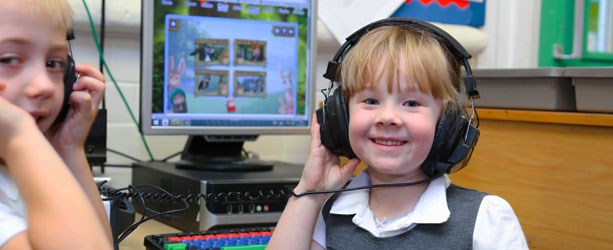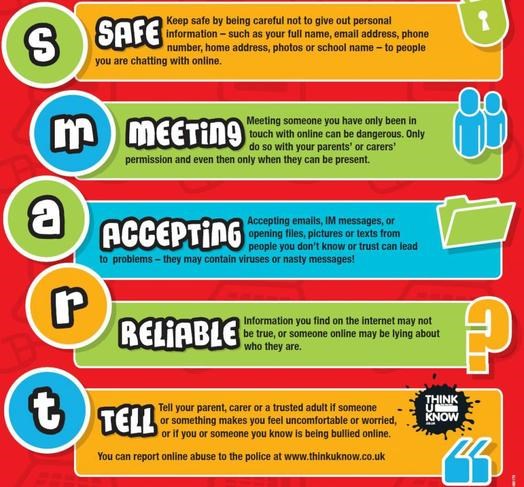
Rationale
The requirement to ensure that children and young people are able to use the internet and related communications technologies appropriately and safely is addressed as part of the wider duty of care to which all who work in schools are bound. A school E-Safety policy should help to ensure safe and appropriate use.
Our E.Safety Policy is currently being updated.
Parents and Carers: We recognise and value the learning partnership with parents and carers and encourage them to be actively involved in staying safe at home as well as at school. With this in mind, we will soon be organising an e-safety workshop for parents and carers to attend. In the meantime, if you would like further information on keeping your child safe online, or if you have a specific concern and would like to make a report directly to a Police E-safety expert, click here or on the logo below, to visit the National Crime Agency’s Thinkuknow website for parents.
E-Safety in the Curriculum
The teaching of e-safety has at its heart Red Hall’s Acceptable Use Policy for the use of computers which outlines safe and responsible behaviour online. The Acceptable Use Policy is summarised in the e-safety rules which are displayed in each classroom. The school has a comprehensive e-safety curriculum and cyber-bullying awareness curriculum, the key points of which are summarised below:
In Early Years:
Children begin to produce and save work online, which they show ownership of by including their name. They use and talk about favourite websites. They learn how to use login details to access computers, and learn to keep their details private. They begin to learn about simple personal information, and who they can trust to share this with. They learn about the many forms which communications technology can take and experiment with its use. They become familiar with our school rules for the use of technology and are taught how to seek help if they have a problem with something they see online.
In Key Stage 1 (years 1 and 2)
Children begin to use appropriate websites and search engines to locate information online; when doing so there is an emphasis on safety and reliability. They become more independent in using their login details and may, with adult support, have chosen a simple password known only to them. In a secure and closely-monitored environment, they begin to use methods of online communication such as email and blogging. As part of our focus on anti-bullying, they are taught how to respond to anything online which upsets them.
In Lower Key Stage 2 (years 3 and 4)
Children become more independent in locating online information and begin to evaluate the usefulness and reliability of websites themselves. They recognise the importance of protecting their online identity, and will have changed their password to a memorable word, which they have not shared with anyone else. They learn how to protect their personal information. Their use of communications technology, e.g. email, expands and they learn how to write respectful online messages. Through assemblies and e-safety lessons, the SMART rules of online safety are taught (please see below), and children know how to respond positively to anything online which they don’t like. Children are also taught about the importance of complying with age-restrictions for websites and apps and about setting limits for their use of technology.
In Upper Key Stage 2 (years 5 and 6)
Children are taught about unwanted online content, known as spam, and learn how to deal with it. They learn the importance of evaluating information sources used and of giving credit to these if they use them in their own work. They learn about ‘strong’ online passwords, and regularly change their passwords to protect themselves online. As their use of technology to communicate widens, they learn about the importance of protecting their personal information. They are taught how to respond to unwanted online communication or cyberbullying. They begin to recognise that some online content can reinforce unhelpful stereotypes.
The SMART rules of E-Safety are:
